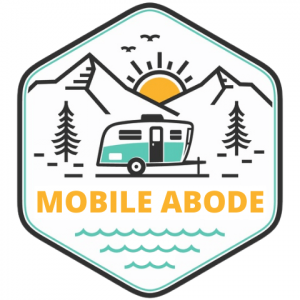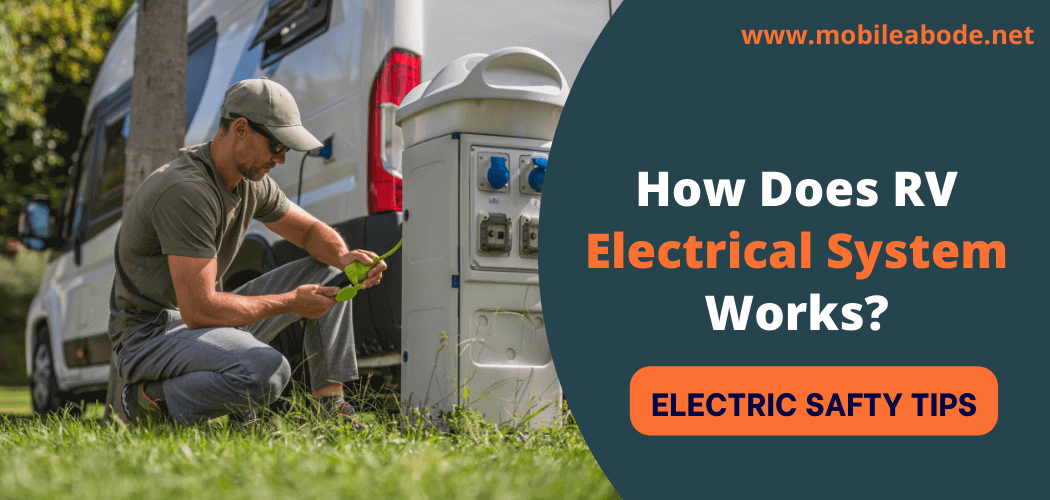Do you know how your RV electrical system works? If not, you’re not alone. A lot of people don’t know much about their RV’s wiring and power systems. But it’s important to understand how they work, especially if something goes wrong.
In this post, we’ll explain the basics of RV electrical systems, from shore power to batteries to 12-volt wiring. By the end of this article, you should have a good understanding of how your RV’s electrical system works and how to keep it running smoothly.
RV Electrical System and Its Working
The RV electrical system is a vital part of your recreation vehicle. It provides power to all the appliances and devices in your RV, from the lights to the fridge. The electrical system also charges the RV batteries, which power everything in the RV when there is no hookup to shore power or a generator.
RV electrical systems are fairly simple. They typically include a shore power connection, one or more batteries, and a 12-volt DC electrical system. The shore power connection is used to hook up your RV to an external power source like a campground electrical hookup or a generator. The batteries store power and provide it to the 12-volt DC system when there is no external power source available.
The 12-volt DC system powers all the lights, fans, and other devices in your RV that run on 12-volt DC power. This includes most of the appliances and electronics in your RV. Some appliances, like the air conditioner, will also run on 110-volt AC power from shore power or a generator.
Now that you know the basics of how the RV electrical system works.
Types Of RV Electrical Systems
There are three main types of RV electrical systems:
- Shore Power: Shore power is the most common type of RV electrical system. It’s what you use when you hook your RV up to an external power source, like a campground electrical hookup or a generator.
- Generator Power: Generator power is used when you’re running your RV’s generator. This provides power to all the appliances and devices in your RV that need it.
- Battery Power: Battery power is used when there is no external power source available. The batteries store power and provide it to the 12-volt DC system, which powers all the lights, fans, and other devices in your RV that need 12-volt DC power.
Also Read: Electrical Service Requirements For Mobile Home
Read RV Electrical Diagram
RV electrical diagrams are a valuable resource during the RV restoration process. They can help you understand how the RV electrical system works and identify which parts you need to restore it.
RV electrical diagrams are usually black and white line drawings. They show the location of the various components in the RV electrical system, as well as how they are connected.
To read an RV electrical diagram, start by tracing the blue lines to see where they go. These are the power lines. Then, look for symbols that represent the different components in the system, like batteries, switches, and lights.
If you need help reading an RV electrical diagram, several books and websites can help. Or, you can ask an RV technician for assistance.
RV Electrical Systems Devices
Converters, inverters, and generators are all devices that can be used to power your RV. But they each have their purpose and function.
1) Converter
Converters are used to convert 110-volt AC power from shore power or a generator into 12-volt DC power. This powers all the lights, fans, and other devices in your RV that needs 12-volt DC power.
2) Inverters
Inverters are used to convert 12-volt DC power into 110-volt AC power. This powers all the appliances and devices in your RV that need 110-volt AC power, like the air conditioner.
3) Generators
Generators are used to generate electrical power. They can be used to power your RV when there is no external power source available. Which one you use depends on what you need to power and how much power you need.
If you’re just powering a few lights and fans, then a converter will suffice. But if you need to power appliances like the air conditioner, then you’ll need an inverter. And if you need a lot of power, then you’ll need a generator.
RV Electrical System Safety Tips for RVs
RV electrical systems are safe if used correctly. But there are a few safety tips to keep in mind:
- Don’t overload the system.
- Use proper wiring techniques.
- Use quality components.
- Use circuit breakers or fuses to protect the syst
- Don’t work on the system while it’s energized.
- Use a qualified RV technician to do any repairs or maintenance. Following these tips, you can enjoy your RV without worry.
Electrical Problems Occur in RVs
There are a few common electrical problems that can occur in RVs:
- Dead batteries
- Tripped circuit breakers
- Lose wiring
- Blown fuses
- Faulty or damaged components
Steps to Troubleshoot these electrical problems
- Check Batteries: If you’re having any of these problems, the first thing you should do is check the batteries. If they’re dead, then you’ll need to charge them or replace them.
- Check Circuit Breakers: Next, check the circuit breakers. If one has tripped, then you’ll need to reset it. If the problem persists, then it’s likely due to loose wiring or a blown fuse. Check all the connections and replace any blown fuses.
- Identify Faulty Component: If the problem is still not resolved, then it’s likely due to a faulty or damaged component. In this case, you’ll need to replace the component. If you’re having trouble troubleshooting the problem, then you can ask an RV technician for assistance.
These are just a few tips for troubleshooting common electrical problems in RVs. By following these tips, you can quickly and easily resolve most electrical issues.
Did You Know: How to running electrical wire under a mobile home?
FAQs – RV Electrical System Working
How is an RV wired?
RVs are wired using a 12-volt DC electrical system. This powers all the lights, fans, and other devices in the RV that need 12-volt DC power.
The 12-volt DC system is powered by one or more batteries. The batteries are charged by a converter, which converts 110-volt AC power into 12-volt DC power.
What runs on battery power in an RV?
In an RV, the battery powers all the lights, fans, and other devices that need 12-volt DC power.
What is the 12-volt system in an RV?
The 12-volt system in an RV is a DC electrical system that powers all the lights, fans, and other devices that need DC power.
Do all RVs have a power converter?
All RVs have a power converter. This converts 110-volt AC power into 12-volt DC power, which charges the batteries and powers all other devices that need DC power.
Do RV outlets work without generators?
RV outlets will work without a generator if they are connected to shore power or a portable generator.
Does shore power charge RV batteries?
Shore power can charge RV batteries if the RV is equipped with a battery charger.
Can I start my RV while plugged into shore power?
Yes, you can start your RV while it is plugged into shore power.
Final Thoughts
An RV is a vehicle that has been designed to provide temporary living quarters for travelers. It contains all of the amenities of a home, including an electrical system.
An RV electrical system is designed to provide power to the RV while on the road. It consists of a battery, converter/charger, and inverter. The battery provides power to the converter/charger which then charges the batteries and powers the appliances in the RV.
If there is more demand for power than what the battery can provide, then the inverter will step in and convert 12-volt direct current (DC) from the batteries into 120-volt alternating current (AC). This AC power is then used to run all of your appliances.

